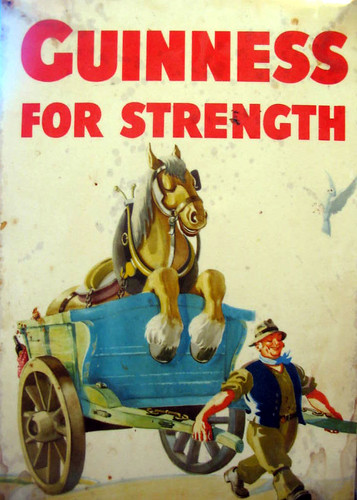Guinness is called the Black Irish Gold. People sometimes don’t know where Ireland is but they know that Guinness comes form Ireland and means – enjoy.
Guinness is Irish dry stout that originated in the brewery of Arthur Guinness. Arthur Guinness started brewing ales in 1759. On 31 December he signed up to a 9,000-year lease at £45 per annum for the unused brewery at the St. James’s Gate Brewery. When I saw the lease in the Guinness Museum, I began to wonder how beer would taste in the year10759.
Arthur Guinness started selling dark beer porter in 1778. The first Guinness beer to use the term was Single Stout and Double Stout in the 1840s. Guinness produced ‘only three variations of a single beer type: porter or single stout, double or extra, and foreign stout for export’.
The reputation as a “meal in a glass” has come from the the fact that in the past one part of the salary paid to workers was in pints of beer. Until these days there are many pubs around the Guinness factory .
Guinness ran an advertising campaign under the slogan “Guinness is Good for You” since the 1920s. This slogan stemmed from market research – when people told the company that they felt good after their pint. Now this type of advertising of alcoholic drinks is prohibited in Ireland.
I have also heard that at the beginning of the 20th century in hospitals pregnant women were given one pint of Guinness per day as protection against anaemia.
Now Guinness is treated as a normal alcoholic drink with all its consequences.The very good Guinness marketers still make a special atmosphere around this beer.
In Ireland and abroad Guinness is treated as the king of beers. A pint of Guinness should be served in a slightly tulip shaped pint glass, as opposed to the taller European tulip glass or ‘Nonic’ glass, which contains a ridge approx ¾ of the way up the glass. Every bartender needs to be able to pour the “perfect pint” of Guinness.The “perfect pint” of Guinness is the product of a “double pour”. The waiting time between the first and second pour should take 119.53 seconds. Guinness has promoted this wait with advertising campaigns such as “good things come to those who wait”. Guinness should be served at 6°C while Extra Cold Guinness should be served at 3.5°C.
In the Guinness factory there is a museum where you can see how beer is made. There is exhibition devoted to the history of company. You can watch old advertisements of Guinness. Ain addition, in the Guinness bar you can learn how to pour “the perfect pint” and drink a pint of Black Irish Gold.You will see the recipe is on karott.com







